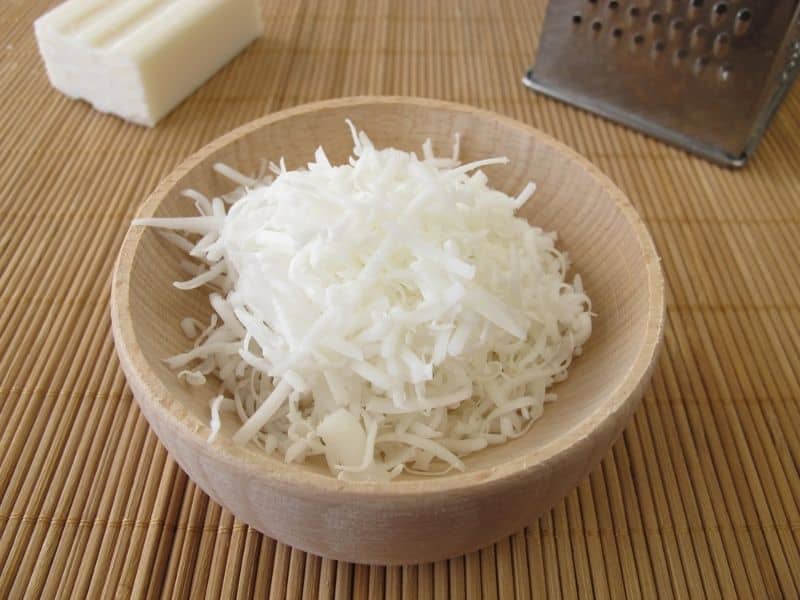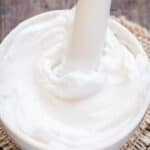Most soap is made up of fats and oils, which tend to turn to semi-solids or liquids at higher temperatures. So it stands to reason that soap will melt if exposed to high enough temperatures. So, at what temperature does this happen?
Soap begins to melt between 120 and 145 degrees Fahrenheit. This means that at this temperature, the soap will start to turn into a liquid form. The higher the temperature, the more quickly it will melt.
However, different ingredients can cause the soap to melt at different temperatures. Let’s take a closer look at what goes into soal melting points.
Soap Melting Point
The melting point is around 140 F. However, the melt and pour soap might melt at 120 F. But you will have to avoid any temperature above 140 F. Any temperature between 140 F and 150 F and above might burn your soap.
If you have traditional soap, the required melting temperature is 120 F. But any soap that has olive or coconut oil will require between 100 F and 110 F temperature. Besides, you will have to consider 75-80 F during the making process to get the desired stability.
You will have many ways to melt your soap. You can use your microwave or oven to melt the soap. Some people believe that hot weather can also melt soap bars. However, you will have to go through every process before going ahead.
Can Hot Weather Melt Soap?
No, hot weather cannot melt your soap since it will not reach the desired temperature. However, it might cause sweating. The impact will be more on any cold process soap.
Your soap might get dreaded orange spots or DOS. It happens when extreme temperature impacts the oil and affects the overall quality of the soap. However, hot weather is not the only cause that leads to DOS.
Soap bars can develop these spots due to different conditions. But the key contributing factor is hot weather. Hence, you will have to consider storing your soap in a cool and dry place to avoid DOS.
Factors that Decide the Melting Temperature Level
There are different types of soap with specific ingredients. Therefore, the heating requirements of all will not be the same. As stated earlier, the standard melting point is 140 F. However, you cannot consider the same temperature for all types of soap.
You will have to go through a few factors to know the melting temperature level of any soap.
The pour and melt soap will require only 120 F. But the melting temperature point of other soaps might be higher. Also, lye soap and synthetic bars will not melt without shredding and combining with other liquids or water.
You will have to put them together at low heat on a stove.
All types of soap will melt in water regardless of the temperature level. Some soap can melt fast due to its size and structure. Also, if any soap contains soft oil, it will melt faster than those made from animal fats.
Can I Melt All Types of Soap?
Yes, all types of soap use oils or fats. Therefore, you can melt all of them. But the temperature requirements will vary. Also, you will have to consider the soap ingredients to find a safe melting process.
As stated earlier, you can melt soap bars in different ways. People prefer using a microwave or oven to melt traditional soap. However, you cannot use your microwave to melt all types of soap.
Soap Melting in a Microwave
You can use your microwave to melt some soap. You will find the process easy and less time-consuming. Take soap pieces or bars and chop or grate them into small pieces.
While doing so, you will have endless possibilities to use your creativity. You can be creative and use different ingredients based on your preference. However, you will have to check the compatibility issues before going ahead.
You can also use a microwave to melt store-bought soap or bars. But you will have to ensure that you are using 100% glycerin soap to make candles or similar projects.
It is worth noting that store-bought bars contain different ingredients. Some of them might explode in your microwave and cause discoloration.
Hence, you can avoid this melting process for decorative candles.
While using a microwave to re-batch your soap, you will have to stir it every twenty seconds. You will have to continue stirring until your soap has melted fully. By doing so, you can get an even mixture.
However, your microwave will smell like soap if you use it for soap melting. Therefore, you will have to prepare yourself to bear this smell for several hours!
Soap Melting in the Oven
As mentioned above, you can also use your oven to melt the soap. It is safe and less time-consuming as well. You might not find much difference between oven and microwave soap melting.
First, you will have to chop the soap into small pieces and keep them in a container. Add water into the soap, stir the soap, and remove excess water. In some conditions, the soap might not need water.
Some will have excess moisture. Therefore, you can avoid water during the melting process. You will have to understand the type of soap you are using to avoid confusion.
What Are the Other Ways to Melt Soap?
The best and the easiest way to melt your soap is in the microwave. You can also use your oven. However, if you do not have access to both, you can think of using a crackpot.
You will find the process a bit the same. First, shred the soap into small pieces and add some water. Stir the combination and remove any extra liquid. Put the pot in the heat and keep stirring until it melts completely.
How to Melt a Leftover Soap
You can melt any leftover soap. You can mix it with any available soap scraps to make a reusable and new soap. You can combine any soap based on your preference. You can choose any fragrance, texture, and size.
First, get all the soap scraps and choose a compatible scent for a better result. Break all the leftovers into small pieces and keep them in a container. Add an equal amount of the water and place the container on the burner at medium heat. Boil the mix and stir it in every thirty seconds.
Once the soap and water have mixed, pour a steel colander. Get a wooden spoon and remove all the extra water. In the end, you will get a molten soap mass. Pour it into a container and wait until it hardens.
Frequently Asked Questions
Yes, you can. The process is a bit similar to melting it in the oven or microwave. You will have to chop the soap into small pieces and add water. Stir the combination and remove any extra liquid. Put the pot in the heat and keep stirring until it melts completely.
No more than 140 F, or you should keep a very close eye on it.
If you do not want to add water, you can melt the soap in a double boiler.
Conclusion
In conclusion, soap generally has a melting point of around 140 F.
You have a variety of ways available to met soap, just make sure you keep a close eye on it. Adding water is generally necessary, but you can avoid it if you are careful.
Be sure to chop the soap into small pieces to help with the melting process. Remember to stir it often! Thanks for reading.






